If you live in the Philippines, then you’d agree with us that restaurants with Chinese food, Japanese food (like onigiri and donburi), and to some extent, Thai food are already very common. That’s why today, we’d like to encourage you to try something new. And that’s to open an Indian cuisine menu of any Indian restaurant and try these food items!
Check out the Indian cuisine menu list we compiled, and see if it’s going to pique you enough to actually Google “Indian cuisine near my location”. And we’ll also take a quick look at what makes Indian cuisine stand out, as well as answer any questions you may have about it.
Let’s get to it, shall we?
Wait… Will I like Indian food and basically, all of the Indian cuisine menu contents?
Well, if you like strong flavors, eye-popping colors, and most of all, spices, then you’d definitely appreciate it! Even non-Asians love it, like this guy:
Give it a try. You never know, after eating in an Indian restaurant, you might find yourself wondering, “Why is Indian food the best?”
Isn’t Indian food just curry?
Well, no. According to The Atlantic, there’s no such word in the Indian language.
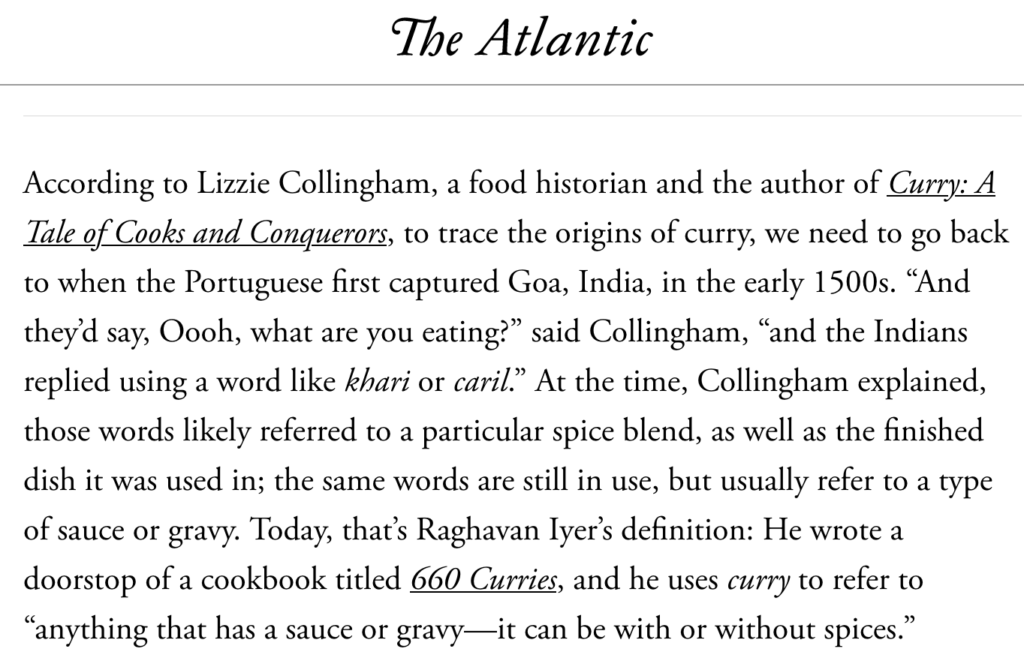
So why is Indian food called curry? It’s basically a translation error. Fun, huh?
What does Indian cuisine consist of?
Okay, so since we’re in the Philippines, you might be asking this question immediately: “Do Indian dishes come with rice?”
And the quick answer here is yes, Indian cuisine has plenty of rice dishes.
But for a more detailed answer, the staple foods of Indian cuisine include (aside from rice), pearl millet, whole-wheat flour, and lentils. Meat, while eaten in India, is not as common. A common Indian food menu is vegetarian-friendly.
Indian food is either gravy or dry dishes and is generally eaten with rice or bread.
And while you may know that the usual Indian cuisine description is “spicy”, that’s not actually the case. They are full of spices though, and that’s different from spicy. Those spices are what add a whole lot of depth and flavors, which is the answer to the question “Why is Indian food so flavorful?”
Does Indian cuisine use beef?

There’s a misconception about Indian food: they don’t have beef dishes. That’s because most people believe that Indians have religious reasons to not do so. For example, in Hinduism, cows are sacred, which is why they’re not eaten.
Plus, there are regions in India where the consumption of beef is considered illegal.
However, some Indians are Muslims, who don’t eat pork but will eat beef, for example.
In short, while it’s rare, you CAN find beef and pork dishes on an Indian cuisine restaurant menu.
Of course, the most commonly used meats in any Indian food menu are chicken, fish, and mutton. So again, if you’re looking for something different (especially the mutton part), give Indian food a try!
Okay, so what Indian food should I order?
We’re glad you asked! Now, you might find the typical Indian restaurant menu intimidating with very unfamiliar names, but that’s why we’re here. We’ll try not to overwhelm you with too many options – instead, we’ll just give seven, in no particular order.
Oh, do take note that not all restaurants may carry the same items, since food in India varies by region.
Okay, on to the list!
Samosas – an entry into an Indian snacks menu list
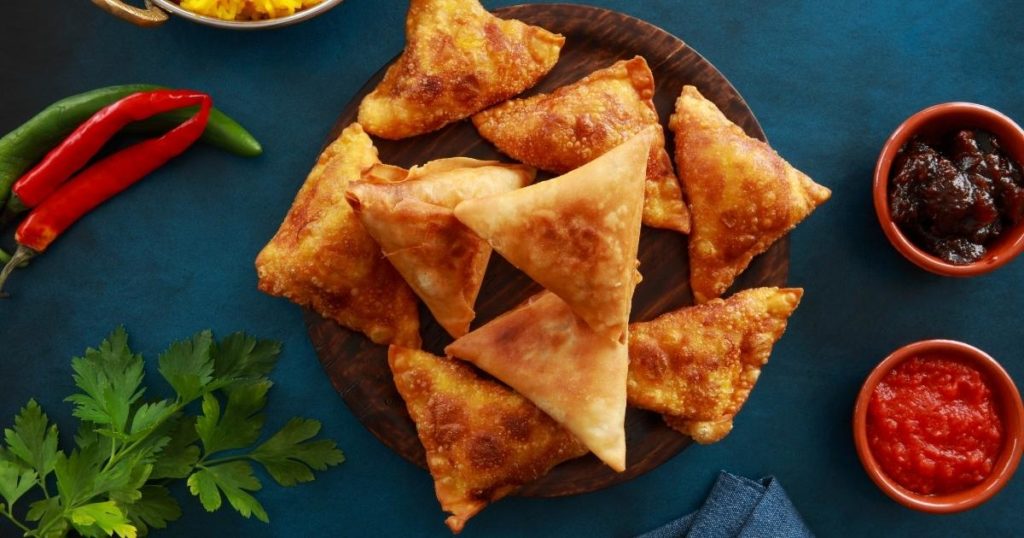
Samosas are appetizers in a typical Indian restaurant. They’re fried, shaped like triangles, and stuffed with mashed vegetables. They’re also typically served with sauces like mint and tamarind.
Bite into one and you’ll immediately taste some light, delicious spices!
Palak paneer
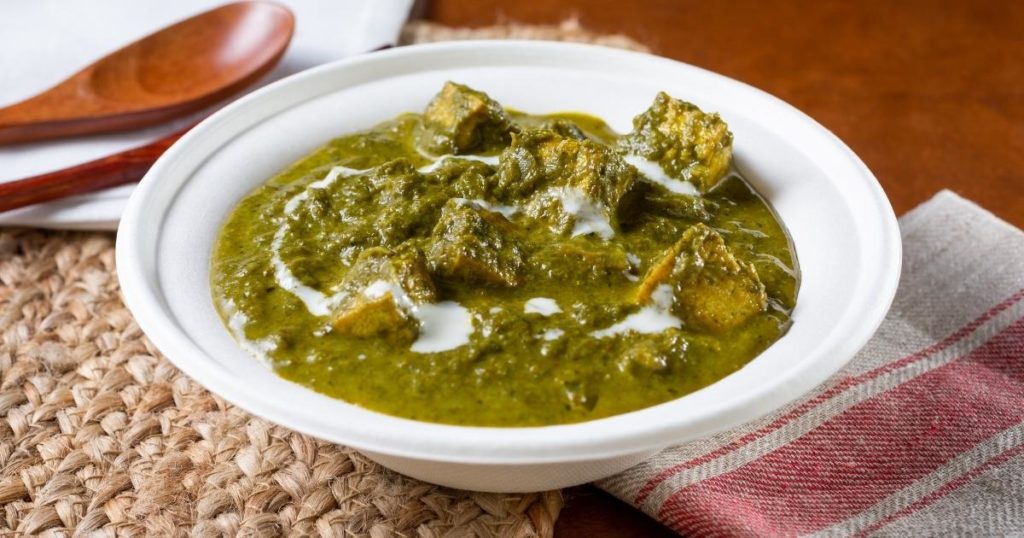
Palak paneer is a smooth, rich, and creamy curry dish that consists of spinach, onions, spices, and pieces of paneer, a type of Indian cottage cheese.
Indian restaurants usually serves palak paneer with rice, bread, or even both. It’s packed with flavor and slight spiciness. You won’t be able to resist dipping your bread or mixing your rice with it!
Naan
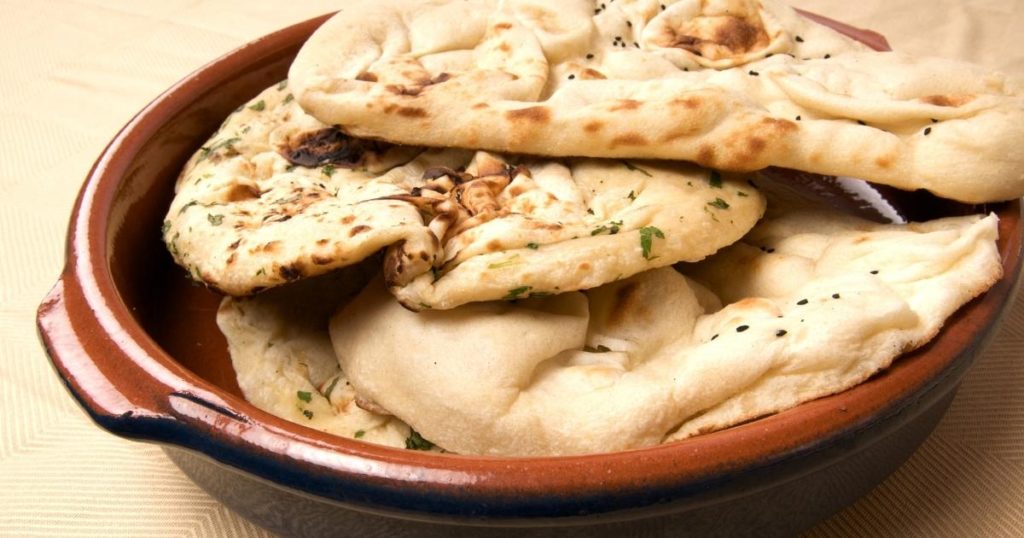
Naan is one of the many breads in Indian cuisine. It may look like pita bread (which you encountered in our article about Middle Eastern foods), but it’s far softer and much fluffier. It has more eggs and yogurt in the dough.
You can eat it on its own, or use it to scoop up sauces. Some restaurants even offer naan with condensed milk for a yummy snack or dessert!
Chicken tikka masala – An Indian cuisine menu staple
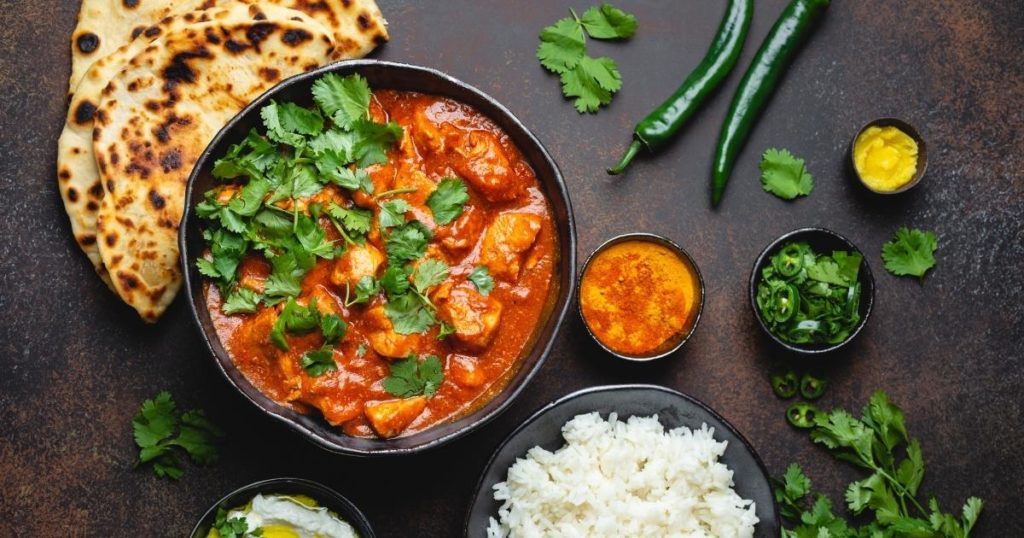
The chicken tikka masala is arguably one of the most popular items in an Indian food menu. It features a tender and spice-marinated roasted chicken with a spicy curry and tomato sauce. Try it for a very intense flavor!
A variation of this is the butter chicken tikka masala. Instead of using a tomato paste, it uses a type of curry made with chicken, spiced tomato, and butter sauce. You’ll enjoy its rich texture!
It’s also less spicy and creamier than the tikka masala.
Biryani – an example of Indian food without curry
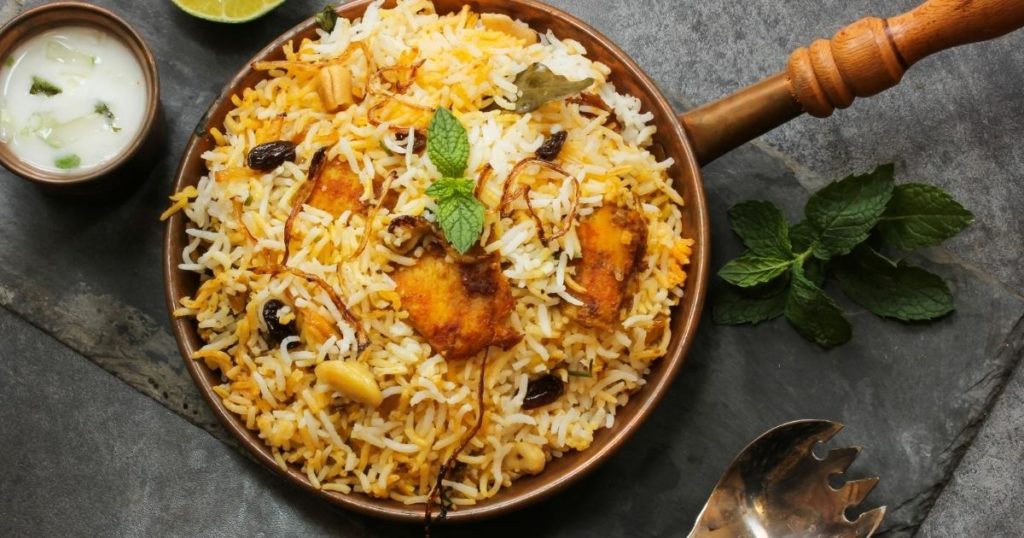
Biryani is a rice and meat dish that includes aromatic spices and can be made with chicken, mutton, vegetables, and even shrimp or other seafood. In short, it has plenty of varieties.
The general preparation is the marination of the meat in spices and yogurt then combining the meat with a delicious-smelling rice. Think of it as a rice bowl, Indian version.
In other words, YUM!
Roghan Josh
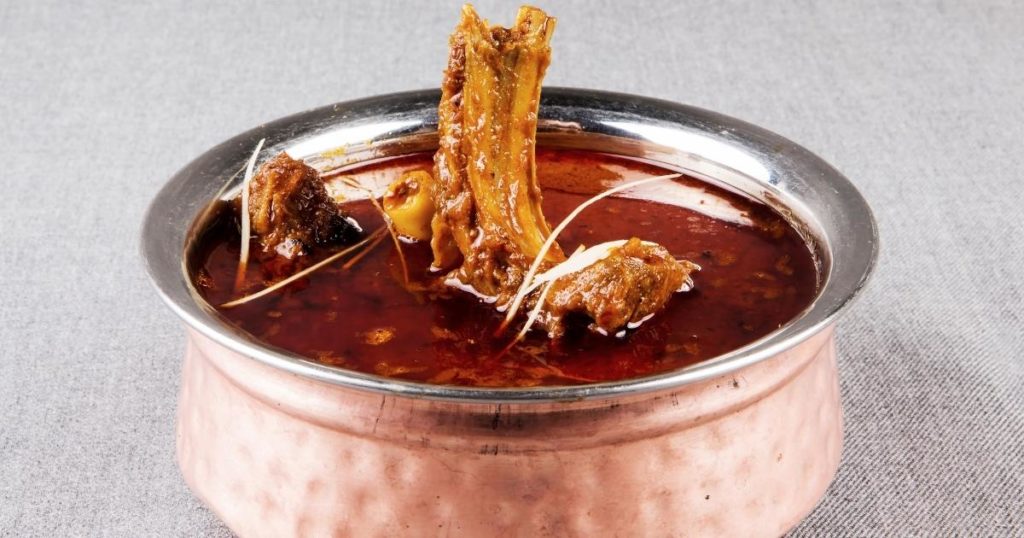
If you want to try out lamb, you can’t go wrong with this dish! It’s composed of braised lamb chunks cooked with gravy made from browned onions, yogurt, garlic, ginger, and great-smelling spices.
And yes, in case you’re wondering, this is a super spicy dish. If you want to try it out but don’t appreciate spice so much, try eating it with rice or naan to somewhat deflect the spiciness in your mouth.
But it’s definitely mouth-watering and a must-try, worth the spiciness you will face.
Masala Chai
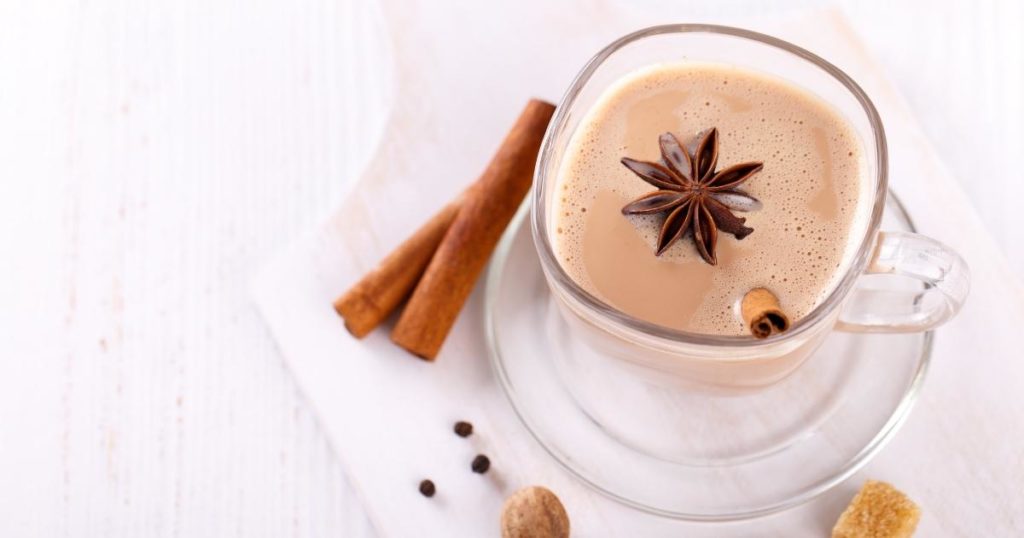
Masala Chai means “spiced tea”. It’s usually made of a mixture of spices and herbs including cinnamon sticks, cloves, ginger, cardamom, black pepper, and black tea leaves. You can also combine it with hot milk for added flavor.
People actually consume this drink not just in India, but also around the world. That only means you should try it, don’t you think?
Are Indian cuisine favorites healthy for me?
So here’s something you have to consider, especially if you’re being health conscious: Are Indian foods healthy?
Like we say many times (like in our article about the Keto diet), we’re not doctors or nutritionists. But according to a health coach, eating traditional Indian food gives you a lot of health benefits like boosted immunity and protection against inflammation.
Ask your nutritionist or doctor for more details. Just keep this as a rule of thumb: moderation is key!
Okay, I want to try Indian cuisine! Where is Indian food near me?
Well, you don’t have to worry about finding Indian food in the Philippines. There are a lot of Indians in the Philippines, so you can be sure that there will be restaurants catering to the food they like.
Of course, if you’re impatient to eat Indian food, you don’t live near an Indian restaurant, and you’d rather make it by yourself, then you’ll like our latest class.
Introducing: Flavors Of India by Chef Him Uy de Baron!
Discover the rich and flavorful Indian cuisine through our latest class. You’ll learn how to cook Indian cuisine in the same way Indian restaurants prepare food!
And think of this class as Indian cuisine for beginners – it’s easy to follow, even if it will be your first time cooking Indian food. Chef Him will take you on a culinary adventure that demystifies the seemingly complex process of Indian cooking.
Here’s a teaser of him discussing the class more, especially about what makes Indian food so different.
Are you excited to start? So are we!
When you enroll in this class, you’ll learn to make the following:
- Dum Shrimp Biryani
- Butter Tikka Masala and Naan
- Palak Paneer
That’s four remarkable and easy-to-make Indian cuisine favorites – and all guaranteed delicious ones! If you noticed, four of them are on our list of must-tries.
So what are you waiting for? Open your taste buds to a whole new palette of flavors and textures. Learn how to make these four Indian cuisine menu items – sign up at The Bailiwick Academy today and get it at a discounted rate (lasts only up to 8PM today, August 20, 2022, Philippine time!)

—
Keep coming back to The Bailiwick Academy blog for more kitchen tips, tricks, and much more!

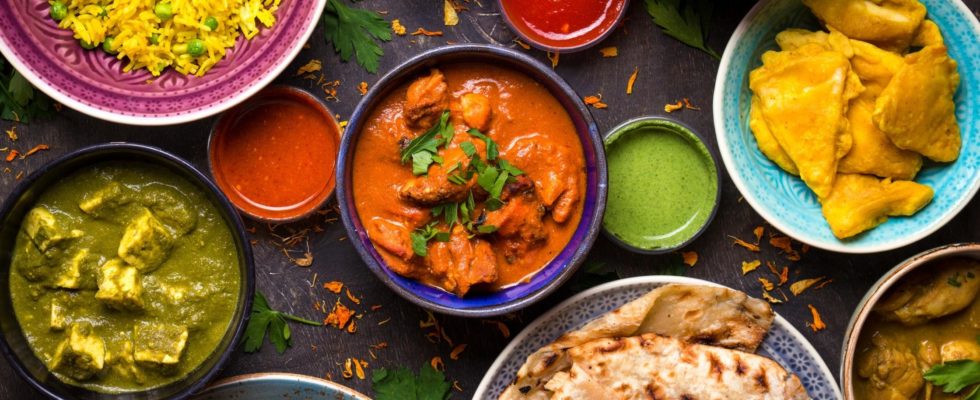
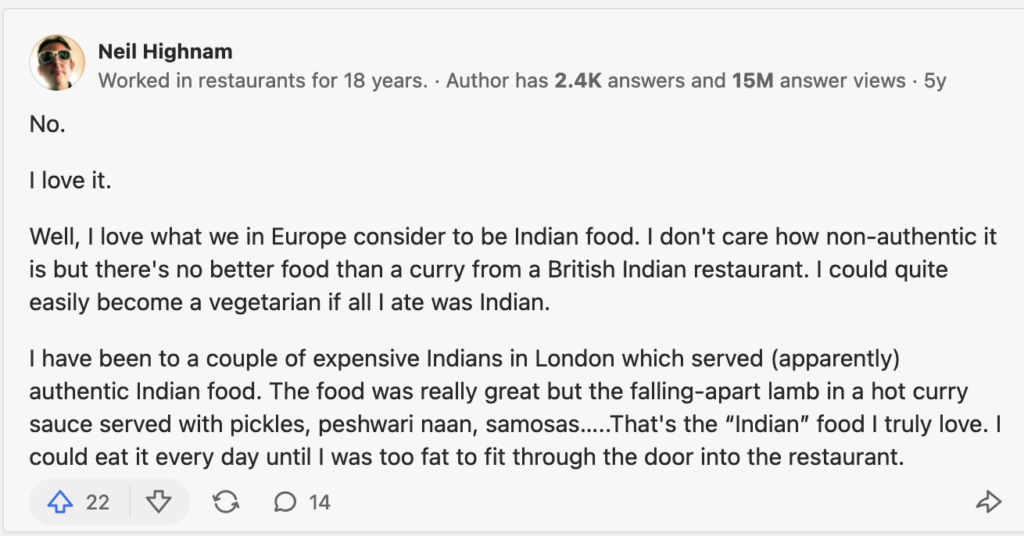
Pingback: Why Should I Learn More Recipes? - The Bailiwick Academy